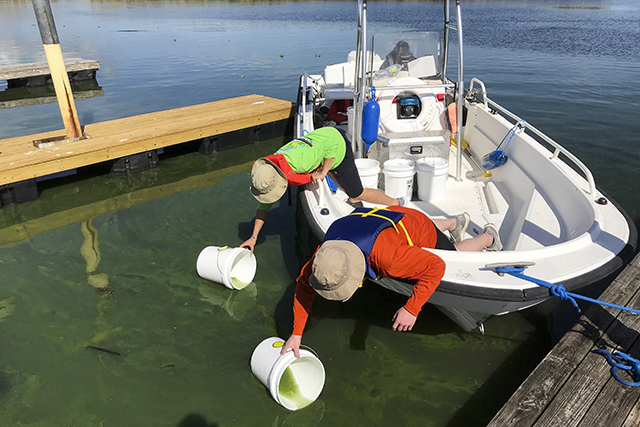Preventing Harmful Algal Blooms in Florida
Due to the complexity of the situation, there are no easy fixes. However, improvements to water quality are possible. This will happen through a combination of education, informed strategy, and collaboration among entities and individuals with diverse backgrounds and knowledge.
UF/IFAS Extension engages the public through on-site information and discussion forums in every Florida county. Meanwhile, the University of Florida partners with individuals and organizations throughout the state, including water management districts, state and federal agencies, local governments, agricultural commodity groups, private industry, and Florida residents.
The Importance of Continued Study

Researchers taking algal bloom samples | UF/IFAS photo by Dr. Dail Laughinghouse
Since there are potential health risks associated with toxins produced by harmful algal blooms (HABs), there is also an urgent need for careful interdisciplinary studies. These efforts will collect data on the presence of specific species, key toxin production, human exposure, and illness occurrences within communities.
Current studies are focused on Lake Okeechobee, the Caloosahatchee Canal and estuary, and the St. Lucie Canal and estuary. Research and evaluation in these areas includes weekly sampling of environmental sites, and ongoing collaboration.

